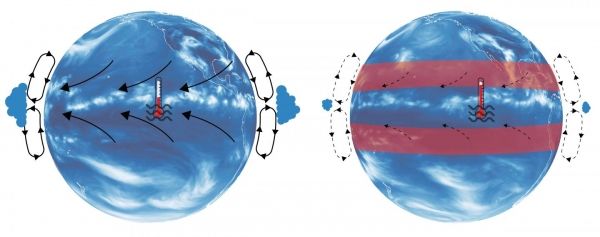In response to future fossil fuel burning, climate computer models simulate a pronounced warming in the tropical oceans. This warming can influence the El Niño phenomenon and shift weather and rainfall patterns across the globe. Despite being robustly simulated in computer models of the climate system, the origin of this accelerated tropical warming has remained a mystery. A new study published this week in the journal Nature Climate Change concludes that climate change outside the tropics is the main culprit.
Earth’s future warming will not be identical everywhere. Atmospheric and oceanic circulation changes, as well as cloud processes, will determine which regions will warm faster and which ones will experience a delayed warming relative to the global mean. Focusing on the tropical regions, a team of scientists from the IBS Center for Climate Physics (ICCP) at Pusan National University in South Korea, along with their international collaborators, has now developed a new method that separates the contributions from local and remote physical processes that cause warming in a given region.
The team found that the expected future warming in the tropics (15oS-15oN) originates mostly from warming that occurs in subtropical regions (16oN-32oN and 16oS-32oS). “To understand this surprising phenomenon, one has to understand how different areas interact with each other climatically” says Dr. Malte Stuecker from the ICCP and lead author of the study.
Read more at Institute for Basic Science
Image: Illustration of atmospheric Hadley cell under present-day conditions (left). Subtropical warming leads to a weakening of the Hadley cell (right), less clouds in most of the tropics, a reduction in the upwelling of cold ocean water, and a resulting increase in tropical temperatures. This process explains the accelerated tropical warming found in climate models in response to increase greenhouse gas emissions. (Credit: Elke Zeller)


